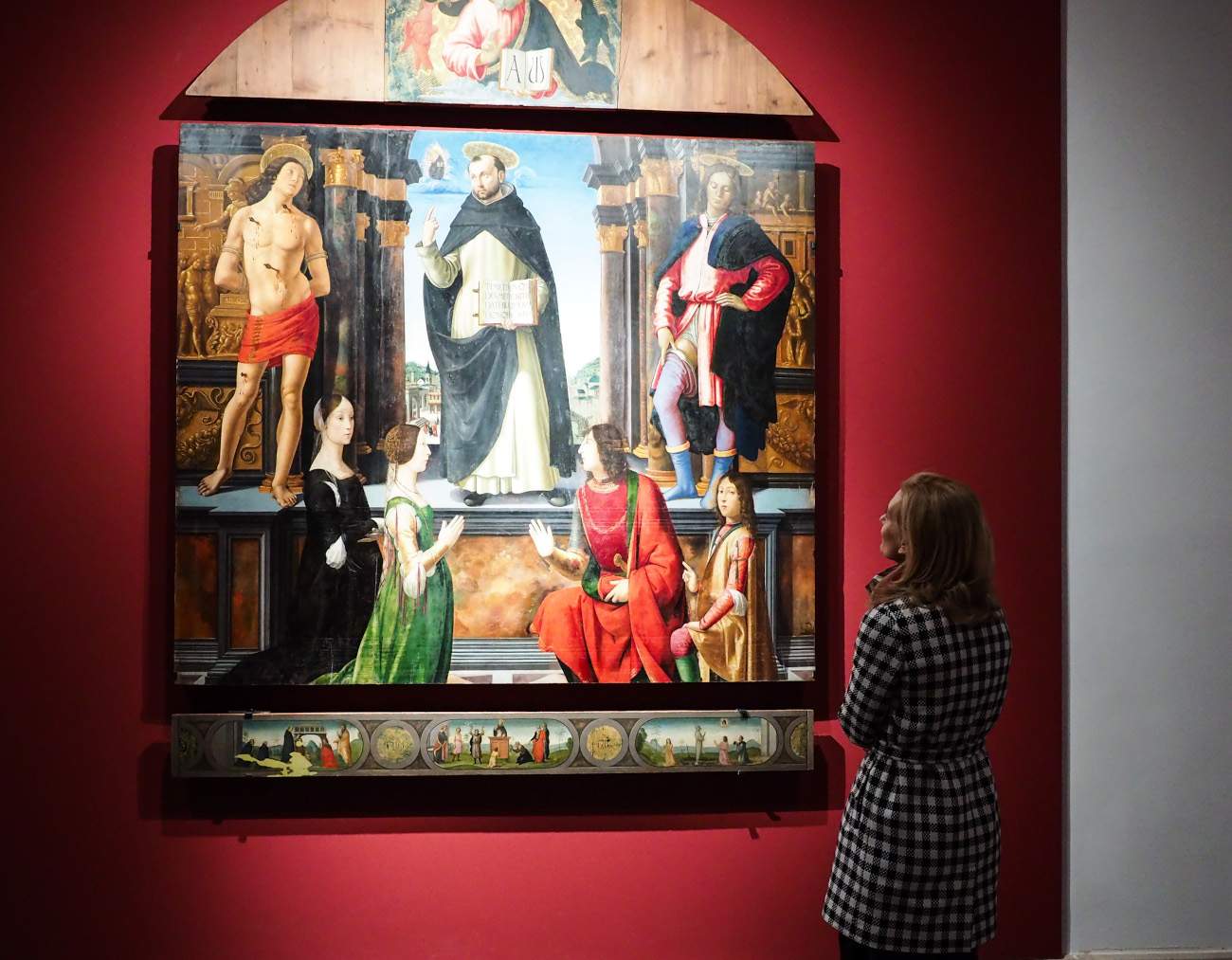Rimini, City Museum reopens renovated sections from the early Middle Ages to the 15th century
The “L. Tonini” City Museum in Rimini reopens to the public on Saturday, April 13, 2024, the sections ranging from the early Middle Ages to the 15th century, renovated in space and enriched in both the artistic and popular offerings. A fundamental part of Rimini’s art history is thus returned to visitors, one hundred years after the creation of the Pinacoteca, once set up in the former convent of San Francesco, then home to the entire Museum until the tragic bombings of 1943-1944.
Fourteen new thematic sections, four multimedia stations with diversified content, more than 170 works including sculptures, paintings, medals and ceramics to tell the story of the area’s early Christian churches, the Rimini of the Pentapolis and the Communal Rimini, the great season of the 14th century up to the 15th century Malatesta period. More than a quarter of the museum has been renovated: new juxtapositions, updated lighting, integration with technological systems. Thanks to the narrative, both chronological and thematic, the stories, places, characters and protagonists of ancient Rimini are now evoked. To look with different eyes at the works already known and discover artifacts in some cases not visible for decades, such as the sarcophagus of Duke Martino and his son Agnello (3rd and 8th-9th centuries) formerly in Santa Colomba, or the Pluteus with crosses from the 6th century, from the church of Saints Andrew, Donato and Justina, reassembled for the occasion after wartime destruction. On display are sculptures and also reliefs from the vanished churches of the early Christian and medieval ages, particularly those from the cathedral of Santa Colomba; the precious 14th-century Rimini panel paintings by Giovanni, Giuliano and Pietro da Rimini, masterpieces of the 15th century such as the Malatesta medals by Matteo de’ Pasti, Giovanni Bellini’s Pietà and Ghirlandaio’s large panel painting, return to be admired in a new light. And again, the Last Judgment by Giovanni da Rimini, displayed in the room of the same name, in the context of a diagnostic study site curated by Ca’ Foscari University (Department of Philosophy and Cultural Heritage, technical assistance by Madatec Milano) in collaboration with the Museum and aimed at understanding the conservation and technical vicissitudes of the torn fresco. At this stage, it will be possible to admire up close the iconic masterpiece of Rimini’s art history.
This is a great process of enhancement that strengthens the civic identity of a place that guards, thanks to the generosity of many, not only works owned by the municipality, but also those owned by the state, as well as by other entities such as the Diocese, AUSL Romagna and, in particular, the Fondazione Cassa di Risparmio di Rimini. The works were financed by the Municipality of Rimini, the Ministry of Culture and with the contribution of the Emilia-Romagna Region, Museum Plan 2022 - R.L. 18/2000.
On April 13 from 6:30 p.m. to 11 p.m. and all day Sunday, April 14, the City of Rimini invites citizens to free tours dedicated to the new sections of the City Museum and, on Saturday, at 9 and 10 p.m., to the Surgeon’s Domus. Reservations are required through https://www.ticketlandia.com/m/musei-rimini. For info call 0541 793851.
The Fellini Museum will also be open exceptionally with free admission on Saturday 13 from 7 to 11 p.m. and for the day on Sunday.
“This renovation,” commented Rimini Municipal Museums director Giovanni Sassu, “marries the philological needs typical of civic collections with the narrative dimension that is peculiar to modern exhibition spaces, retraining perception through light and promoting knowledge through a non-invasive use of multimedia. A museum that becomes less enigmatic, then, and more eloquent by restarting from the treasures of the fourteenth and fifteenth centuries, but also from the lesser-known fragments of a Middle Ages all waiting to be discovered.”
 |
| Rimini, City Museum reopens renovated sections from the early Middle Ages to the 15th century |
Warning: the translation into English of the original Italian article was created using automatic tools. We undertake to review all articles, but we do not guarantee the total absence of inaccuracies in the translation due to the program. You can find the original by clicking on the ITA button. If you find any mistake,please contact us.




























